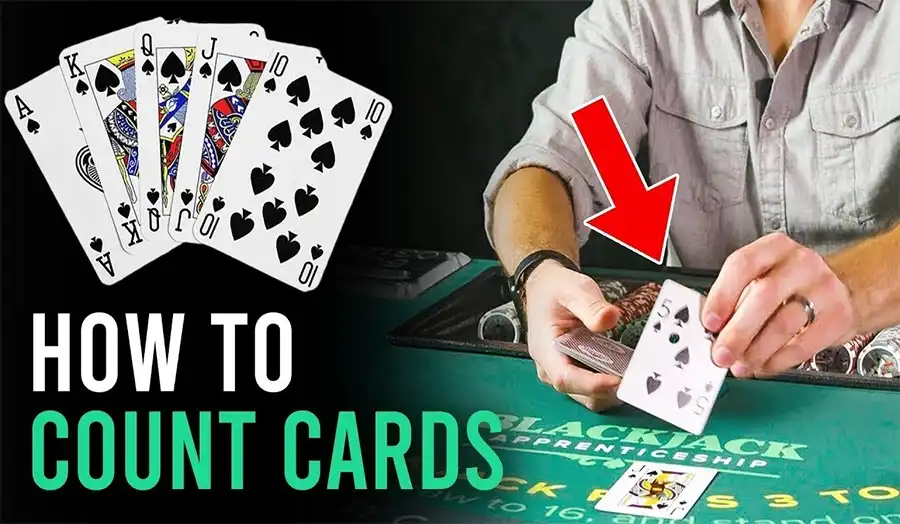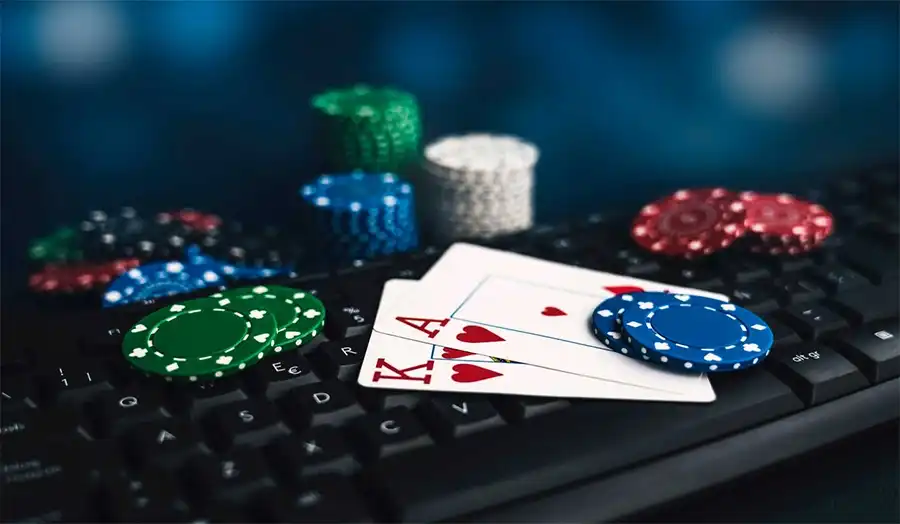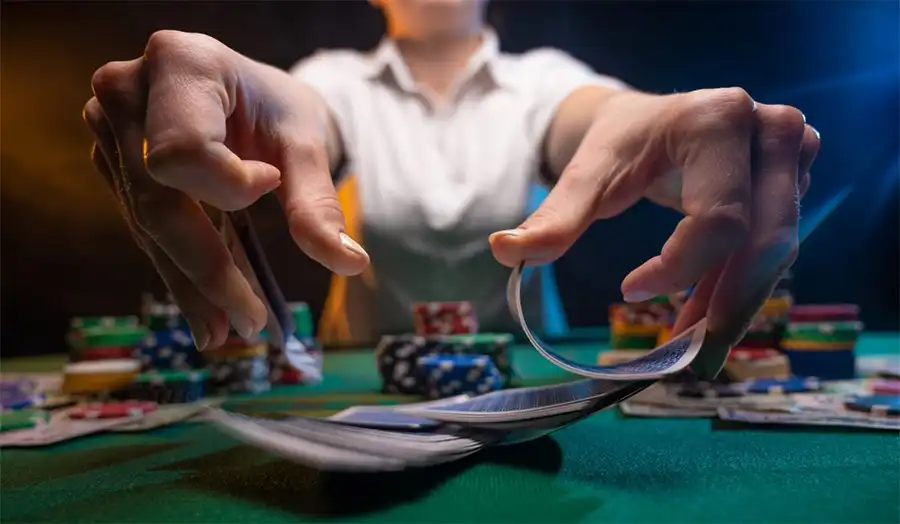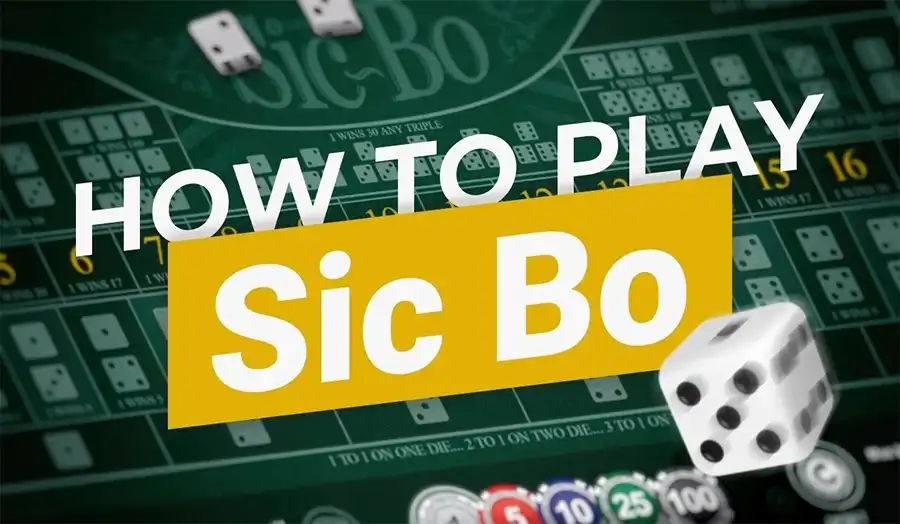In the world of casinos, Blackjack is always a popular game thanks to its combination of luck and strategy. Many people believe that every outcome depends entirely on chance, but the reality is quite different. If you want to improve your skills seriously, learning how to count cards in Blackjack is the right direction. This is not just an advanced technique that helps you read the state of the deck, but also gives you a significant advantage over ordinary players.
Many hesitate because they think Blackjack card counting is complicated and requires a genius-level memory or math skills. However, if you understand the basics and follow fundamental steps, learning Blackjack card counting techniques is completely achievable. The key is patience, focus, and consistent practice.
In this article, win tips will teach how to count cards when playing Blackjack, understand how card counting works, and how to apply it effectively at the table.

What is card counting and why is it effective in Blackjack?
To understand how to count cards in Blackjack, you need to know how the deck operates during the game. Blackjack is not purely a game of chance like baccarat. Previous hands can influence your odds in the next round because cards already drawn do not return to the deck unless the dealer reshuffles.
This is why card counting works. When you know how many high or low cards remain, you can predict your chances of winning and adjust your bets and strategy accordingly. If many high-value cards like 10, J, Q, K remain, you have an advantage. Conversely, if the deck contains many low cards, the house has a better chance.
Blackjack card counting is not cheating. You do not manipulate the deck or use devices. You only calculate based on visible information - and this is legal in most countries, although many casinos do not encourage it.
Boost your confidence and elevate your game with our inspiring guide on how to play blackjack
How Blackjack card counting works
When learning how to count cards when playing Blackjack, you should understand that all counting techniques are based on assigning values to cards. Low cards usually carry positive values, while high cards carry negative values. By adding these values, you can see when the deck favors you.
A high total indicates many high cards remain in the deck - the perfect time to increase your bet. A low total suggests fewer high cards, signaling caution.
Although there are various counting systems, they all revolve around the same principle: track the ratio of high cards to low cards to adjust your strategy.

Learning the Hi-Lo system – Easiest technique for beginners
If you want to start learning how to count cards in Blackjack from scratch, the Hi-Lo system is the best choice. It is the most popular method because it is simple, effective, and easy to practice.
In Hi-Lo, cards are assigned as follows: low cards from 2 to 6 are +1, 7 to 9 are 0, and high cards 10, J, Q, K, A are -1.
As you play, add 1 for each low card dealt and subtract 1 for each high card. Ignore 7, 8, and 9. Keep a “running count,” which is the total sum of values. You can then convert it to a “true count” by dividing by the number of decks remaining, which helps you make more accurate decisions in multi-deck games.
Hi-Lo has proven effective in research and real-world trials. Mastering this system gives insight into how experts use Blackjack card counting techniques to gain an edge over the house.
Practice card counting before playing for real
Theory is important, but card counting skills come from practice. Most beginners make mistakes: counting too slowly, losing focus, or miscalculating values. To master how to count cards when playing Blackjack, practice counting a full 52-card deck in 25–30 seconds.
Once you are comfortable, increase difficulty by counting while listening to music, watching TV, or being in a noisy environment. This simulates casino conditions. Card counting is not just simple math; it is the ability to maintain perfect focus.
After mastering speed, practice in free online Blackjack games or with friends. This helps you understand the challenge of counting while making strategic decisions.

When to increase your bet while counting cards
One reason many people learn how to count cards in Blackjack is to know when to raise their bets and maximize advantage. A high running count indicates many high cards remain - the golden moment to increase your bet. High cards increase your chances of getting Blackjack or cause the dealer to bust.
When the total count is low or negative, it means many high cards have already been dealt. Reduce your bet, play cautiously, and wait for a better opportunity.
Managing your bets based on card counting is what creates long-term advantage. You don’t need to win every hand, but statistically, the odds tilt in your favor over time.
Common mistakes in Blackjack card counting
When learning Blackjack card counting, beginners often face the same challenges. The most common mistake is letting emotions interfere. Players may raise bets too early or late, or lose focus after a few hands. Some forget to track the number of decks remaining, causing the true count to be inaccurate.
Additionally, beginners sometimes try too many advanced techniques at once. Initially, focus on one system - Hi-Lo - until mastery. Consistency and discipline matter more than complex strategies.
Is card counting still effective in modern casinos?
Many believe card counting is outdated because modern casinos use multiple decks, frequent shuffles, or automatic shufflers. However, Blackjack card counting techniques are still effective if you know how to adjust your strategy.
More decks only require more careful true count calculation; the ability to predict the ratio of high to low cards remains. Many online live dealer Blackjack tables do not reshuffle often, allowing players to apply card counting longer.
Card counting doesn’t guarantee every hand, but it provides a consistent statistical advantage. Patience and bankroll management are key to sustaining it.

When not to count cards
To effectively apply how to count cards when playing Blackjack, you should know when to stop. Crowded tables make it hard to track cards accurately. Continuous shuffling also reduces the effectiveness of counting.
If you lose focus, feel stressed, or have been playing too long, counting will cause more mistakes than benefits. Take a break and return when your mind is clear.
Conclusion
Learning how to count cards in Blackjack not only improves your play but also increases the excitement of the game. It requires practice and a calm mindset. By understanding the principles, tracking the deck, and applying Blackjack card counting in real scenarios, you move closer to becoming a skilled player. Card counting is not a secret trick; it is a skill anyone can learn with patience. Combining strategy and smart bankroll management will show significant results over time.
Refer to: Blackjack playing tips: Strategies to improve your game and win more consistently







